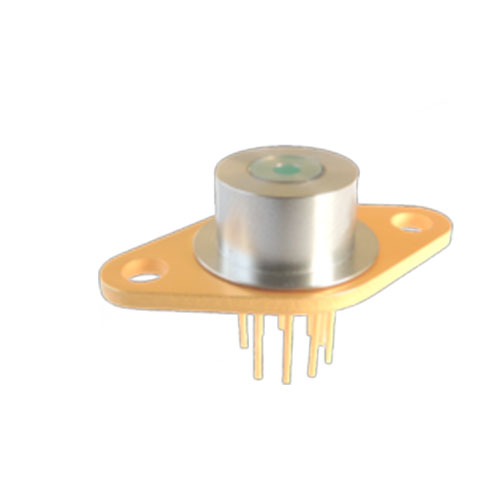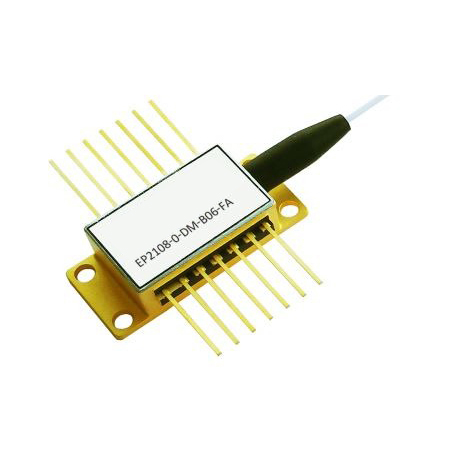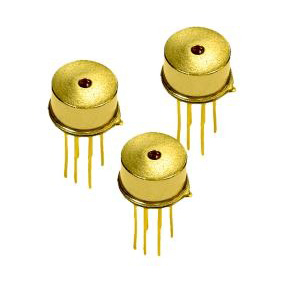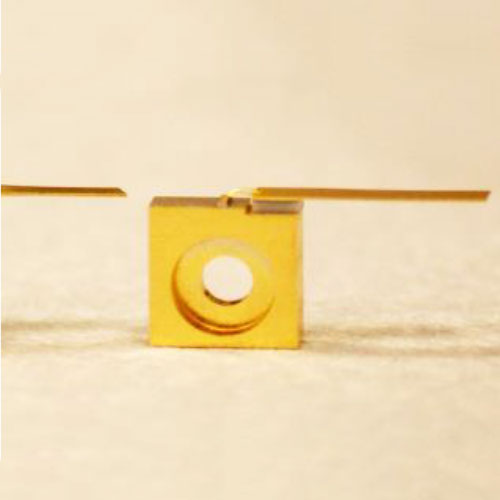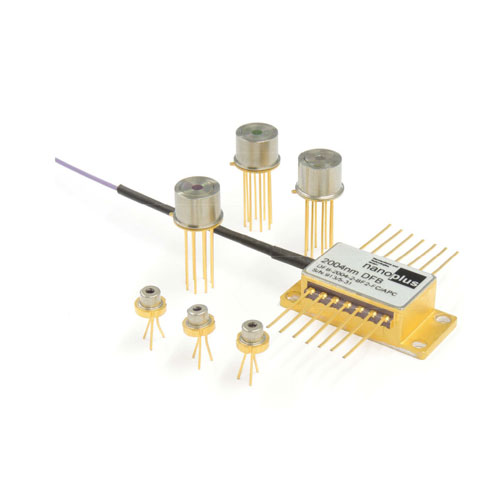Description
3000nm DFB interband cascade laser facilitates new TDLAS applications in mid-infrared
The prices depend on the modules, contact us for more details about the products.
Beamqus offers a DFB interband cascade laser (ICL) at any target wavelength in the mid-infrared (MIR) between 3 μm and 6 μm. The device operates in continuous wave (cw) mode around room temperature. Specifications and behavior are very comparable to a nanoplus laser at lower wavelengths. When you set up an ICL-based analyzer, you can, hence, transfer the engineering knowledge you have gained from building short-wavelength gas sensors.
The beamqus DFB ICL opens tunable laser absorption spectroscopy (TLAS) for novel MIR applications in industrial gas sensing.
In the 3 μm to 6 μm wavelength window, now covered by interband cascade lasers, many industrially relevant trace gases have their strongest absorption bands. They show absorption strengths that are several orders of magnitude higher than those in other infrared (IR) areas. This concerns prevalent molecules such as carbon dioxide (CO2), nitric oxide (NO) or water (H2O). Most hydrocarbons, e. g. methane, equally locate their topmost absorbing features at these ICL wavelengths.
Using the strongest absorption band of the detected trace gas contributes to
accelerate the sensing speed
reduce the noise and
miniaturize the sensor.
nanoplus ICLs are considered for various progressive applications in industry and research. In the oil and gas sector, they enable accurate process control and support higher energy efficiency and pollutant reduction.
Compared to other sensing techniques, such as gas chromatography, TLAS-based sensors offer the unmatched advantage of real-time analysis.
beamqus DFB ICL technology outperforms other MIR laser technologies
Different laser technologies have been investigated in recent years to access the 3 μm to 6 μm wavelength range. Besides interband cascade lasers, GaSb-based type I interband diodes and intersubband quantum cascade lasers (QCL) have been a major focus of research.
While GaSb-based type I interband diodes have the disadvantage of decreasing hole confinement and increasing Auger recombination, fast phonon scattering loss impairs the use of intersubband QCLs.
An interband cascade laser, in contrast, uses optical transitions between an electron state in the conduction band and a hole state in the valence band in a cascade of Sb-based type-II QW structures. A broken-gap band edge alignment enables the tailoring of the emission wavelength by altering the cascade structures.
Interband-cascade technology is ideal for high-performance lasing in the entire range from 3 μm to
6 μm due to relatively wavelength-independent threshold powers. It combines high performance with reasonably low power consumption. Like all nanoplus lasers, these devices are manufactured without epitaxial overgrowth, avoiding impairment of ICL performance due to the insertion of patterning-induced defects within the laser layers.
| parameters | symbol | unit | minimum | typical | maximum |
|---|---|---|---|---|---|
| wavelength precision | δ | nm | 0.1 | ||
| optical output power | Pout | mW | > 1 | ||
| forward current | If | mA | 70 | ||
| threshold current | lth | mA | 50 | ||
| current tuning coefficient | CI | nm / mA | 0.2 | ||
| temperature tuning coefficient | CT | nm / K | 0.3 | ||
| typical maximum operating voltage | Vop | V | 4 – 6 | ||
| slope efficiency | e | mW / mA | 0.06 | ||
| side mode suppression ratio | SMSR | dB | > 35 | ||
| slow axis (FWHM) | degrees | 35 | |||
| fast axis (FWHM) | degrees | 55 | |||
| storage temperature | TS | °C | +20 | ||
| operational temperature at case | TC | °C | +20 |
beamqus DFB lasers show outstanding spectral, tuning and electrical properties. They are demonstrated in figures 1 – 3. Click on the graphics to enlarge.
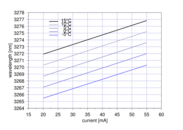
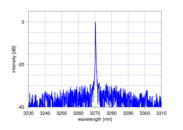
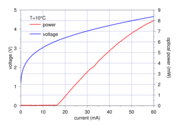
1 2 3
Figure 1: Mode hop free tuning of nanoplus 3270 nm DFB interband cascade laser
Figure 2: Spectrum of nanoplus 3270 nm DFB interband cascade laser
Figure 3: Typical power, voltage and current characteristics of nanoplus 3270 nm DFB interband cascade laser
Free space mounting
beamqus developed a specific free space package for interband cascade lasers. The TO66 header disposes of an extra large thermo-electric cooler. It is hermetically sealed with a black cap and anti reflection coated window. Please click on the mounting for detailed specifications and dimensions.
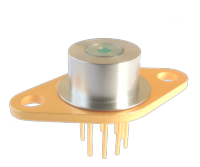
TO66 header
with TEC
and thermistor,
black cap and
AR coated window
Accessories
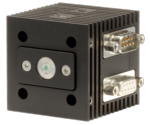
- improved heat distribution
- connectors for laser diode driver
- connectors for temperature controller
- M6 thread for optical posts
- easy use with standard cage systems
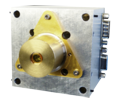
compact collimation module with heatsink and lens
- collimated beam
- specified beam direction
- identical reference and heat sink plane
- TEC + thermistor
- hermetically sealed laser housing
Application:
Carbon dioxide, nitric oxide, water vapour and most hydrocarbons, like methane, acetylene, formaldehyde and ethane have their strongest absorption features between 3000 nm and 6000 nm.
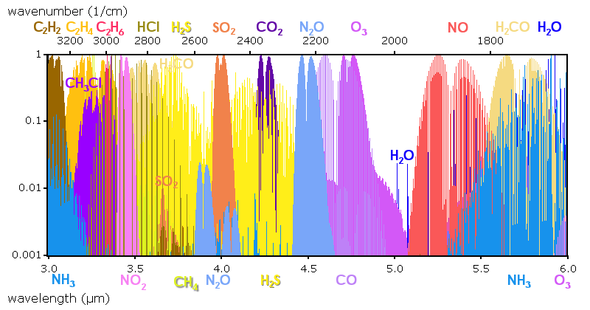
Other manufacturers for 3000 nm Distributed Feedback Lasers.
nanoplus Wavelengths 2000nm-15000nm .
